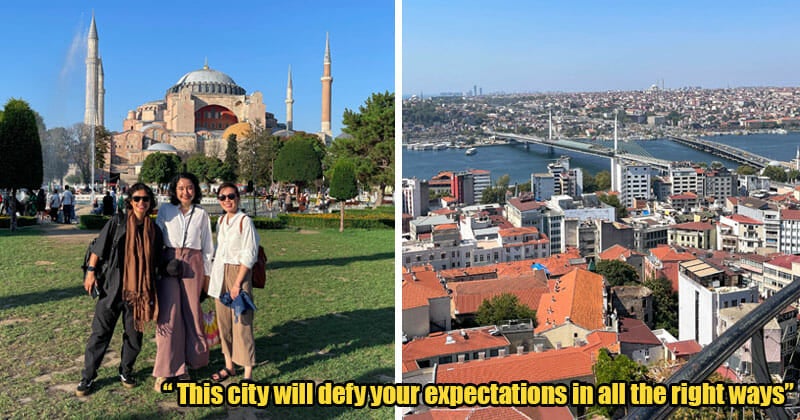Istanbul, a city where continents meet, was never on my travel bucket list. Still, when an invitation from the Turkish Tourism Promotion and Development Agency (TGA) to participate in a ‘culture trip’ around Istanbul was sent our way, I could not decline.
For the unacquainted, Istanbul, Turkey is a city situated on two continents (Asia & Europe), steeped in thousands of years’ worth of history. And although my journey to Istanbul began with many apprehensions, I was pleasantly surprised to return with many unforgettable memories. Here are just a few reasons why I fell in love with Istanbul (look out for my travel tips!):
1. Architectural Splendours: Go on a Tour Through Time
- İstiklal Street
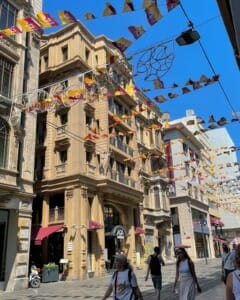
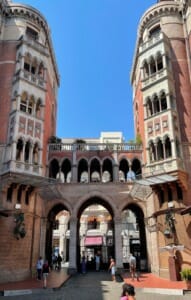
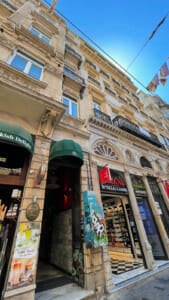
This is one of Istanbul’s most iconic main streets that houses numerous cafes & restaurants, rustic bookstores, modern boutiques, historical landmarks (Galata Tower and the Church of St. Anthony), and more. This bustling promenade will bring visitors on a visual journey across continents with its various architectural styles including Egyptian, European, Italian and many others.
I kid you not, one moment I was walking past buildings reminiscent of European capitals like Paris or Vienna; the next, I was transported to Italy with some buildings resembling the palaces of Venice or Florence. If you look closely, you’ll even spot Egyptian and Middle Eastern influences in the details. It was easily one of the most captivating and enchanting streets I’d ever strolled through.
Pro tip: Drop by on weekdays during work hours to avoid large crowds, because it will get very congested.
- Balat Street
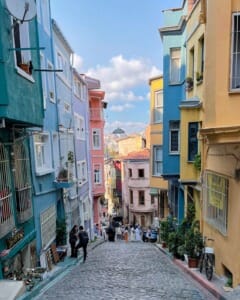
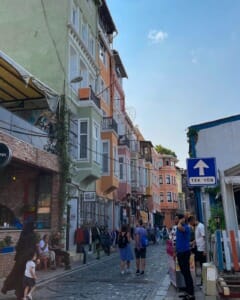
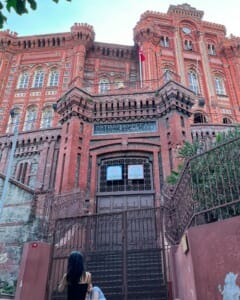 Phanar Greek Orthodox College (the oldest surviving Greek Orthodox school in Istanbul) situated on Balat Street
Phanar Greek Orthodox College (the oldest surviving Greek Orthodox school in Istanbul) situated on Balat Street
Be prepared to be greeted by quaint multicoloured buildings, cobblestone roads, and a visual feast of architectural styles encapsulating the city’s rich history in this charming neighbourhood. Just like Istiklal Street, you’ll be able to spot numerous architectural styles here ranging from European-influenced buildings and Italian Renaissance-style residences to Egyptian and Middle Eastern architectural aesthetics. Make sure you’re camera-ready! On top of that, I’d strongly recommend stopping for traditional Turkish food or coffee and purchasing an antique or two as you meander through these charming roads.
Pro tip: Wear shoes. Roads here can be uneven and very, very steep.
2. Unique experiences for the explorer in you
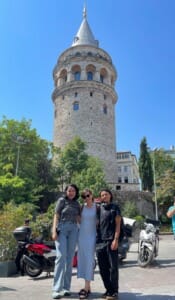
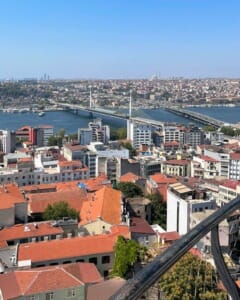 The view from Galata Tower’s observation deck
The view from Galata Tower’s observation deck
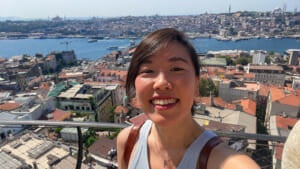 That’s me! And the Bosphorus Strait in the background; across the strait is Istanbul’s Asian side
That’s me! And the Bosphorus Strait in the background; across the strait is Istanbul’s Asian side
Initially built as a wooden watchtower during the Byzantine era (5th century) then modified to become a stone tower by the Latin Empire of Constantinople (today’s Istanbul) in the 14th century, the Galata Tower now serves as a tourist attraction, appealing to locals and non-locals alike. Head to the observation deck on the top floor and you’ll be blessed with unmatched panoramic views of this historic city. You’ll also be able to spot the Bosphorus Strait (a natural strait in Istanbul that separates Asia & Europe), the Golden Horn (a major urban waterway & primary inlet of the Bosphorus) as well as the majestic Hagia Sophia Mosque and Blue Mosque from up here.
Pro tip: Visit in the morning to avoid crowds or during sunset for a golden hour view of the city (it will likely be crowded during this time, but the view is worth it).
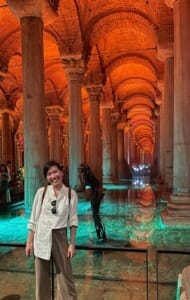
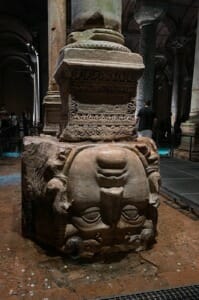 A pillar carved with the head of Medusa
A pillar carved with the head of Medusa
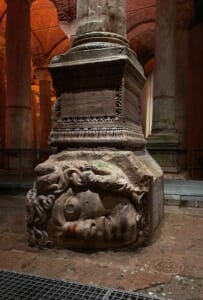 A second pillar carved with the head of Medusa
A second pillar carved with the head of Medusa
Also known as the Basilica Cistern, the Yerebatan Cistern was constructed in the 6th century as a water storage system to store & supply water to the Great Palace of Constantinople and other nearby areas. Today, this underground chamber is frequented by tourists for its fascinating history and unique architectural ingenuity. This historical landmark is held up by 336 marble columns, two of which are particularly well-known because their bases are carved with the head of Medusa. No one really knows why they’re there but it is believed they were put there to ward off evil spirits. If you love all things eerie and mysterious, this is the place for you.
3. Shop or simply be awed by their handcrafted, world-renowned products
- Ottoamano for scarves
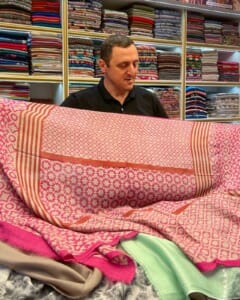

From silk & cashmere to wool fabrics of all kinds, Ottoamano (situated in the Grand Bazaar) is known worldwide for its carefully made scarves and other textiles. With countless intricate designs and exquisite fabrics to choose from, you’ll be spoilt for choice!
Fun fact: This store is so highly revered around the world that even Hollywood actor Ben Affleck dropped by just two weeks before we visited!
View this post on Instagram
- Nick Merdenyan’s enchanting leaf calligraphy
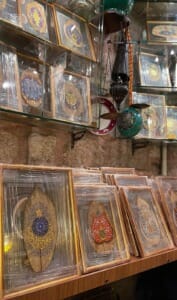
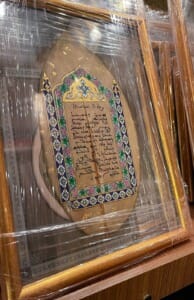
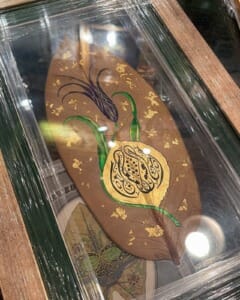
Nick Merdenyan, also known as Lord of the Leaves, practices one of the most unusual yet captivating forms of calligraphy I’d ever seen – he paints on dried leaves. Tucked away in a quiet corner of the Grand Bazaar, Merdenyan paints traditional symbols and verses from different religions – including Islam, Christianity & Judaism, to name a few – on leaves. His masterful skills have gained international recognition (including from the likes of Laura Bush, Hillary Clinton & Queen Letizia of Spain) and you can purchase these artworks as gifts or souvenirs for yourself from his store!
- Punto Carpet for the finest rugs & carpets
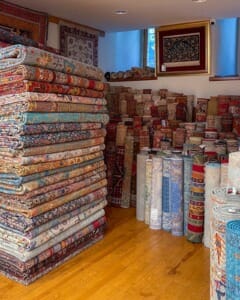
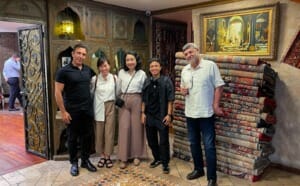
Punto Carpet has been around for five generations offering masterfully handwoven carpets in many different variants (e.g. tribal, floral, metallics, etc.) ranging from moderately priced to the most extravagant carpets money can buy. Even if you don’t intend to purchase a carpet, I’d highly recommend stopping by to admire their craftsmanship and unparalleled selection of carpets. Don’t worry, you won’t be pressured into buying anything.
- Firca Ceramic for quality tiles
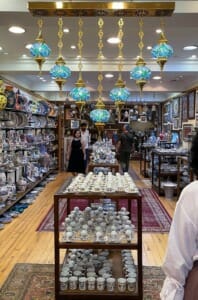
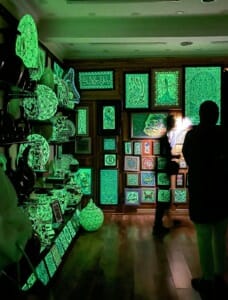 There’s a room that holds glow-in-the-dark ceramics!
There’s a room that holds glow-in-the-dark ceramics!
For some of the world’s finest handmade quartz and ceramics, this is the place to be. With a heritage spanning decades (since 1759), you can be sure that Firca Ceramic only uses the highest quality materials in all its creations. Focusing primarily on Ottoman (today’s Turkey) patterns, no two pieces are alike as everything is uniquely designed and painted by hand. If you’re lucky, you might even catch them making new pieces in the shop!
4. Istanbul’s bustling art scene


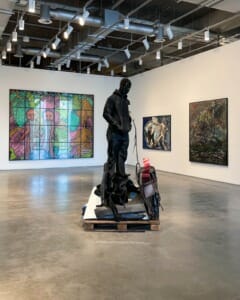

This is Turkey’s first-ever museum of modern & contemporary art and it showcases a wiiiiide selection of artistic works on exhibit including paintings, sculptures, photographs, and interactive multimedia installations. Many of these exhibits tell stories that will inspire you, engage your mind and ignite your imagination. Like me, you probably won’t be able to stop taking photos here!
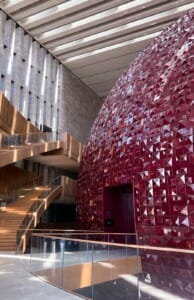
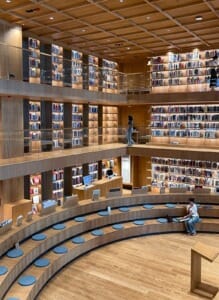 Inside the AKM Library
Inside the AKM Library
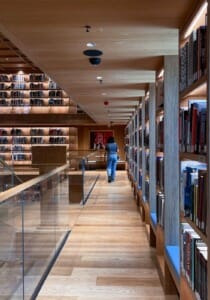 Inside the AKM Library
Inside the AKM Library
 Inside the AKM Library
Inside the AKM Library
A striking architectural marvel in its own right, this creative hub brings to life a myriad of cultural experiences, from exhibitions and world-class performances to workshops and inspiring lectures. If you’re an aficionado of the arts, do drop by the AKM Library situated within its walls where you’ll find a rich collection of all things Music, Arts, Architecture and Design. I’m no bookworm but I thoroughly enjoyed sifting through the books and basking in the peacefulness of this place.
5. Mosques: potent symbols of unity
The mosques in Istanbul are like none I’ve seen in Malaysia. From its sheer size and architecture to its rich history, the mosques in Turkey are not just stunning but also symbolic establishments where different faiths collide and coexist. As a non-Muslim visiting this city, I can honestly say that visiting the mosques and listening to the stories behind them were one of the main highlights for me.
Pro tip: Dress respectfully (Men must don long pants & women’s heads, chests, and legs must be covered. No tank tops or mini dresses/skirts, ladies! And do bring your own scarf/shawl or you’ll need to rent/buy one at the mosque)
- Hagia Sofia Mosque: Where East Meets West
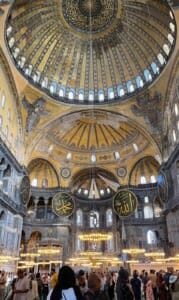 Spot the Seraphim angels on the pendentives
Spot the Seraphim angels on the pendentives
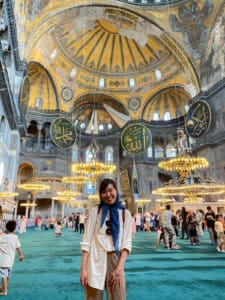
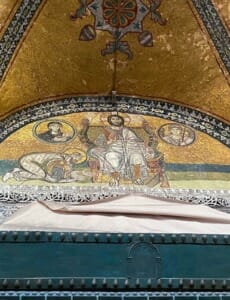 The Imperial Gate Mosaic (located near the entrance to the mosque) showcases Christ (on the throne), Mother Mary (left), and the Archangel Gabriel (right).
The Imperial Gate Mosaic (located near the entrance to the mosque) showcases Christ (on the throne), Mother Mary (left), and the Archangel Gabriel (right).
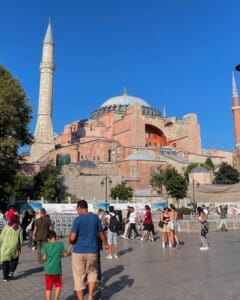
What used to be the grand cathedral of Constantinople from the 6th century with intricate mosaics is now a mosque adorned with Islamic art & elegant calligraphy. If you look closely, you will still see elements of Christianity from the Byzantine period throughout the mosque including artworks of Jesus Christ, the Virgin Mary, saints, and more. This mosque was magnificent inside out and to see different religious elements etched into the artwork was an eye-opening experience. You can see how much Turkey cherishes its multifaceted history here.
Fun fact: The use of domes and minarets in this mosque was considered an engineering marvel during its time & is what inspired the design of many places of worship today.
- Blue Mosque: A Symphonic Fusion
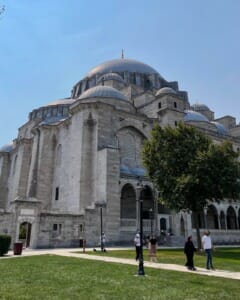
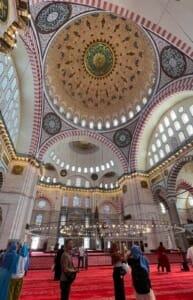
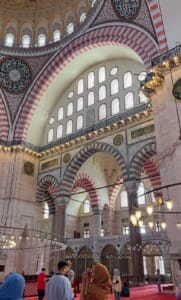
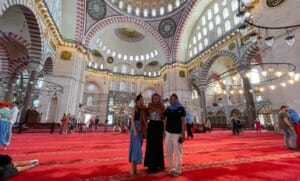
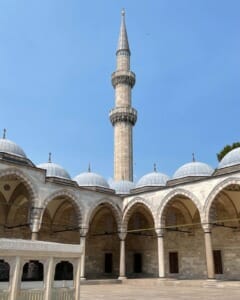 One of the six minarets of the Blue Mosque
One of the six minarets of the Blue Mosque
Commissioned by Sultan Ahmed I and constructed in the 1600s, the design of the Blue Mosque (aka Sultan Ahmed Mosque) was largely inspired by Byzantine architecture, particularly the Hagia Sophia. One of its most notable features is the six minarets which, during its erection, caused a bit of fuss because only the Grand Mosque in Mecca had that many minarets at the time. The issue was resolved after Sultan Ahmed I sent an additional minaret to Mecca as a gift.
Inside, you’ll be greeted by stunning handmade Iznik tiles (most of which are blue, hence the name) featuring intricate floral and geometric designs running across the entire mosque as well as impressive chandeliers that were gifted by various rulers and sultans. There’s even a courtyard surrounding the mosque furnished with fountains & lush gardens. You’ll see many visitors sitting in the courtyard, just enjoying the view of the mosque.
To conclude…
This marks the end of my list of memorable experiences from Istanbul, Turkey but this is merely the tip of the iceberg. My advice to those who, like me, never thought Istanbul would be a worthwhile experience: please give this enchanting city a chance. I promise it will defy your expectations in all the right ways and leave an indelible mark on you.
And if you’re already searching for flights to Turkey, I’d highly recommend Turkish Airlines.
It was my first time flying with this airline and the 10 hours spent on the plane (each way) was nothing short of amazing: seats were comfy (there was ample legroom), food & drinks were commendable, overall, the experience was lovely. Turkish Airlines also currently flies 14 times a week (IST-KUL-IST).
Planning to fly elsewhere? Turkish Airlines now connects to 300 destinations worldwide and if the flight you book happens to include a layover in Istanbul anywhere between six and 24 hours, you can take advantage of their complimentary Touristanbul service to discover İstanbul. You’ll get to see historical sites and enjoy authentic Turkish cuisine plus, transportation is provided! To learn more about the tour, visit their website here. You can also follow them on Instagram!
For more information about things to see, do, and eat in Turkey, visit TGA’s website or follow them on Instagram!
Also read: M’sians Will Need to Apply for Travel Permits to Enter These 30 European Countries Starting 2024

